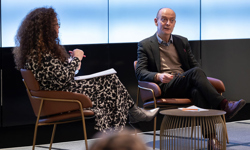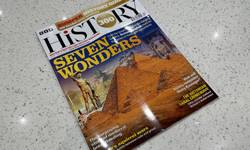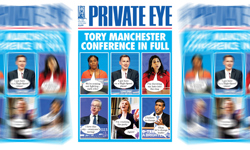The ongoing shift to integrated digital / print brand strategies is a given. But in my view, from a US perspective, several other developments also promise to be "transformative" in 2014 and well beyond. Here are two of those — look for more in my next column.
* The newsstand becomes an increasingly exclusive club
As of January 1, TNG, the wholesaler that accounts for about 50% of North American retail magazine sales, begins imposing a per-copy fee of between two and eight cents on most magazines, plus three more cents on copies distributed in Texas and Alaska. Just 135 magazines determined to be yielding an "acceptable contribution" for TNG are exempt from these added fees (magazines that represent 50% to 60% of total US newsstand sales, estimates The New Single Copy). Other wholesalers will undoubtedly follow suit.
While such fees were inevitable, given that wholesalers' viability is at stake due to rising costs and the downward sales spiral, second-tier magazines must now scramble to overhaul their strategies, presumably further reducing draws and dropping some retail accounts. Lowest-rung, highest-fee magazines will most likely be forced to exit the mainstream newsstand channel. Many affected publishers will try to develop or expand alternative retail / distribution options.
Less newsstand "clutter" will be welcomed by the dominant publishers and wholesalers, and fewer marginal titles should improve efficiencies and alleviate some of the channel's economic strains.
But will less crowded displays and fewer choices appreciably improve sales for the already-dominant titles? Can second-rung titles avoid exacerbated sales erosion (even assuming surgical, by-store analysis for redistributions)? What will happen to the special interest titles that have done much to keep the newsstand afloat in recent decades? Might significantly narrower assortments further discourage browsing / impulse buys? Will retailers view fewer titles as a positive, or another sign that this is a dying category that's ripe for more cutbacks? While the fees won't apply to launches (until TNG determines their gross margin contributions), aren't they nevertheless likely to (further) deter all but the largest publishers from newsstand entry? Is there no value in enabling launches from young entrepreneurs who might have innovative concepts that wouldn't fly at big, high-overhead companies, but might grow and infuse the newsstand with much-needed new relevance / excitement? Once upon a time, small start-ups served as a sort of farm team for big publishers, who acquired the ones that took off.
As the results play out over the next year, we're also likely to see further structural changes in the newsstand channel. Fasten your seat belts.
* The continued ascendancy of "native advertising"
"Native" advertising will continue to grab a significantly larger share of total advertising revenue in the months ahead. A survey of product / services brand marketers for the Custom Content Council found that branded content accounted, on average, for 37% of total 2013 marketing budgets, and that 80% of marketers anticipate a "moderate or aggressive" shift in spending toward content marketing looking forward. Tellingly, 73% said that branded content is better than standard magazine ads — up from 66% in 2012.
The lion's share of content marketing dollars went to print publications – that spending rose the most of three measured categories, to an average per marketer company of $1 million-plus, up from $775,000 in 2012. Electronic sponsored content marketing budgets (including but not limited to buys in magazine digital assets) rose 13.8% on average.
Magazine media companies are clearly yielding significantly better profits from sponsored content packages than from cut-rate standard digital ad formats. Indeed, the proliferation of dedicated native advertising platforms and sales teams underlines their conviction that native is a solution to the further depressed digital ad CPMs resulting from the rapidly growing practice of automated / programmatic advertising buys. The formula: Sponsored content deals = premium ad pricing.
Given that most magazine categories (with some major exceptions, like fashion) continue to see declines or small growth in print ads, the native strategy seems ordained, so we must hope that it indeed ends up contributing more than it cannibalises in terms of standard print ad buys.
Native's momentum is nowhere clearer than at Time Inc. Time Inc's landmark decision to jettison the corporate editor-in-chief role and have editors report to their division business heads was step one in a massive strategic shift as it preps to spin off from Time Warner in 2014. Having been (according to its latest CEO, Joe Ripp) financially hamstrung by its legacy church / state firewalls, Time Inc is making up for lost time. Just one example: Its new Watercooler Live native ad platform, which "pours advertiser content, social commentary and Time Inc editorial content into microsites and ad units", in Adweek's description.
Meanwhile, not only is Forbes Media hoping (over-optimistically?) to sell itself for $400 million in no small part based on the success of its precedent-setting "Brand Voices" sponsored content platform, but other publishers with similarly vaunted journalistic reputations are fighting to hire Forbes’ digital talents to super-charge their own sponsored-content platforms.
While the US Federal Trade Commission is exploring native ads' potential for misleading consumers, any actual attempt to impose specific regulations would turn into a game of whack-a-mole. Still, the FTC's mere attention should serve to ensure that legit media incorporate and monitor internal policies requiring somewhat clear identifications of sponsored content and restraining over-the-top implementations in the heat of deal-making.
To end on a somewhat upbeat note: Condé Nast says it's determined to continue having editors report to an editorial director.












